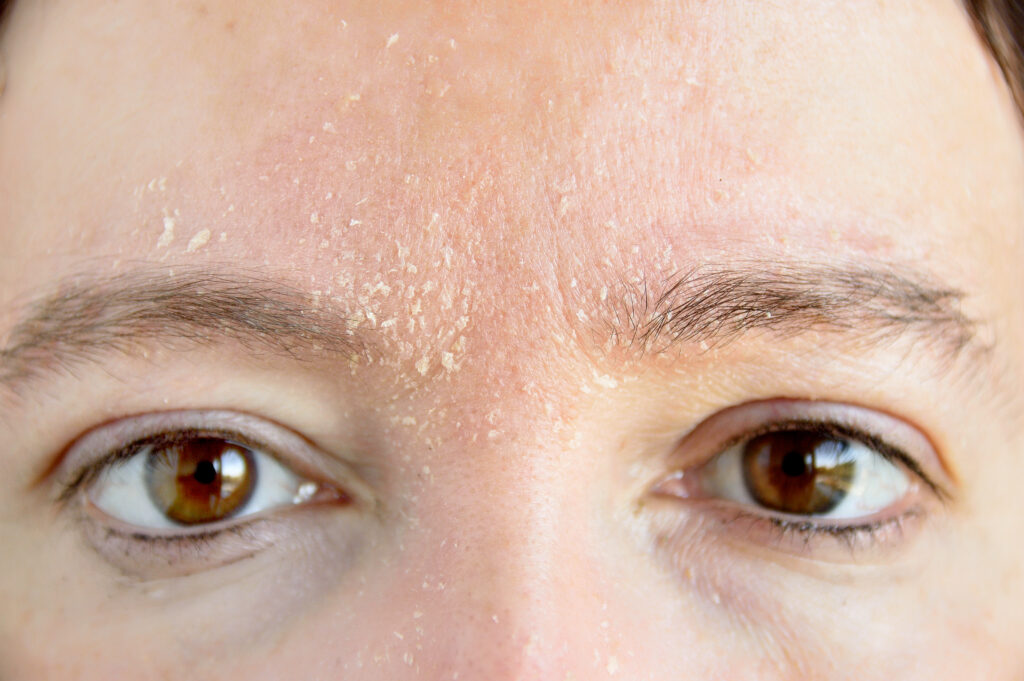
The environment we live in is filled with pollutants that can have a detrimental effect on our skin health.
The skin barrier, which is the outermost layer of the skin, serves as a protective barrier against external pollutants. However, exposure to environmental pollutants can weaken the skin barrier, making it more susceptible to infection, irritability, and allergy development.
When the skin barrier is compromised, it can also lead to the development of other skin issues, such as acne and premature aging. We will discuss these concepts further by describing three common environmental chemical pollutants that can impact our skin and weaken the skin barrier.
Particulate Matter Pollution
Particulate matter pollution, or PM, is a type of air pollution that contains microscopic particles. These particles can penetrate the skin barrier, leading to inflammation and oxidative stress. As a result, PM pollution has been linked to a wide range of skin issues, including premature aging, skin cancer, eczema, and acne.
This type of pollution can also exacerbate existing skin conditions, such as rosacea and psoriasis.
Volatile Organic Compounds
Volatile organic compounds, or VOCs, are chemicals that are released into the air from everyday products, such as cleaning supplies, paints, and cosmetics. These compounds can be absorbed through the skin, leading to irritation and inflammation.
VOCs have been linked to a range of skin issues, including contact dermatitis, eczema, and acne.
Heavy Metals
Finally, heavy metals, such as lead, cadmium, and mercury, are found in various sources, including water, food, and air pollution. Over time, these metals may build up within the body, resulting in toxicity and harm to the skin’s protective layer.
Heavy metals have been linked to skin irritation, allergy development, and chronic skin conditions such as eczema and psoriasis, similar to that of particulate matter pollution.
Environmental pollutants such as particulate matter pollution, volatile organic compounds, and heavy metals can penetrate the skin barrier, leading to inflammation, oxidative stress, and susceptibility to skin issues such as infection, irritability, and allergy development.
Taking proactive steps to reduce exposure to such environmental pollutants is essential to protect skin health.
The Effects of Heavy Metals on Skin Health
Heavy metals, such as lead, cadmium, and mercury, are known to have significant effects on skin health. Exposure to these metals can occur through various pathways, including inhalation, ingestion, and skin contact with contaminated soil or water.
- Ingestion is one of the most common pathways of exposure, as heavy metals can contaminate food and water sources.
- Inhalation is also a significant source of exposure, particularly for individuals working in industries that involve metal processing or manufacturing.
- Skin contact is another pathway of exposure, particularly for individuals living near contaminated sites or using cosmetics or personal care products that contain heavy metals.
The health effects of heavy metals depend on several factors, including the dose, duration of exposure, and individual susceptibility, yet, most any exposure will be noteworthy.
Heavy metals can cause skin inflammation and allergic response by disrupting the immune system’s normal function. Heavy metals interact with immune cells, causing an overactive immune response.
This immunotoxic effect can also cause a breakdown in the skin barrier, allowing for increased penetration of other environmental pollutants, leading to further skin damage and a perpetual cycle of negative effects.

One of the most significant impacts of heavy metal exposure on skin health is the exacerbation of pre-existing skin conditions such as dermatitis. Heavy metals can trigger or worsen skin conditions such as eczema, psoriasis, and acne by increasing inflammation and oxidative stress in the skin.
Indoor Air Pollutants Effects on Skin Health
The issue of indoor air pollution is increasingly becoming a matter of concern in numerous areas, affecting overall health and well-being as well as skin health.
Three of the most common sources of indoor air pollution include building materials, cleaning products, and combustion appliances.
- Building Materials such as paints, varnishes, and adhesives can release volatile organic compounds (VOCs), which can cause skin irritation and allergic reactions.
- Cleaning products can also contain VOCs and other chemicals that can cause skin irritation and damage the skin barrier.
- Combustion appliances, such as gas stoves and heaters, can also be sources of indoor air pollution. These appliances can release carbon monoxide and nitrogen dioxide, which have inflammatory effects on the skin.
Long-term exposure to these pollutants can also lead to other skin issues such as eczema and psoriasis, an exacerbation of pre-existing skin issues, or the development of skin-based allergies.

Alternative Air Pollutants
Another significant source of indoor air pollution that can impact skin health is secondhand smoke. Secondhand smoke contains a complex mixture of chemicals that can cause skin inflammation and barrier compromise. Exposure to secondhand smoke can also lead to skin dryness, itchiness, and premature aging.
Mold is another indoor air pollutant that can have skin effects. Mold grows in damp environments and can release spores that can trigger allergic reactions and cause skin irritation. Regular contact with mold may also result in persistent skin issues.
Final Thoughts
Environmental pollutants can have significant impacts on our skin health. From particulate matter pollution to volatile organic compounds and heavy metals, exposure to these pollutants can cause skin irritation, allergies, inflammation, and skin barrier damage.
